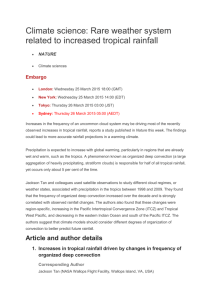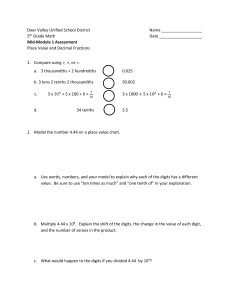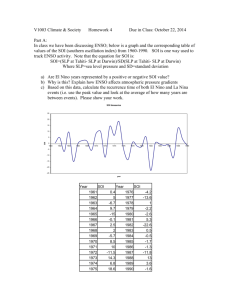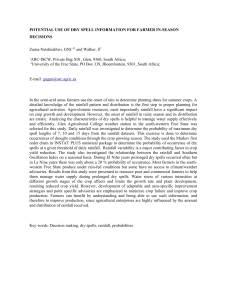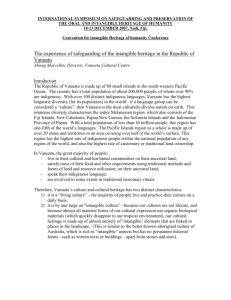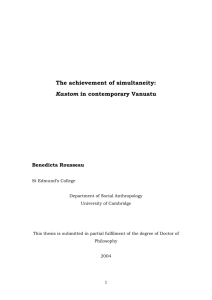35-Abstract
advertisement
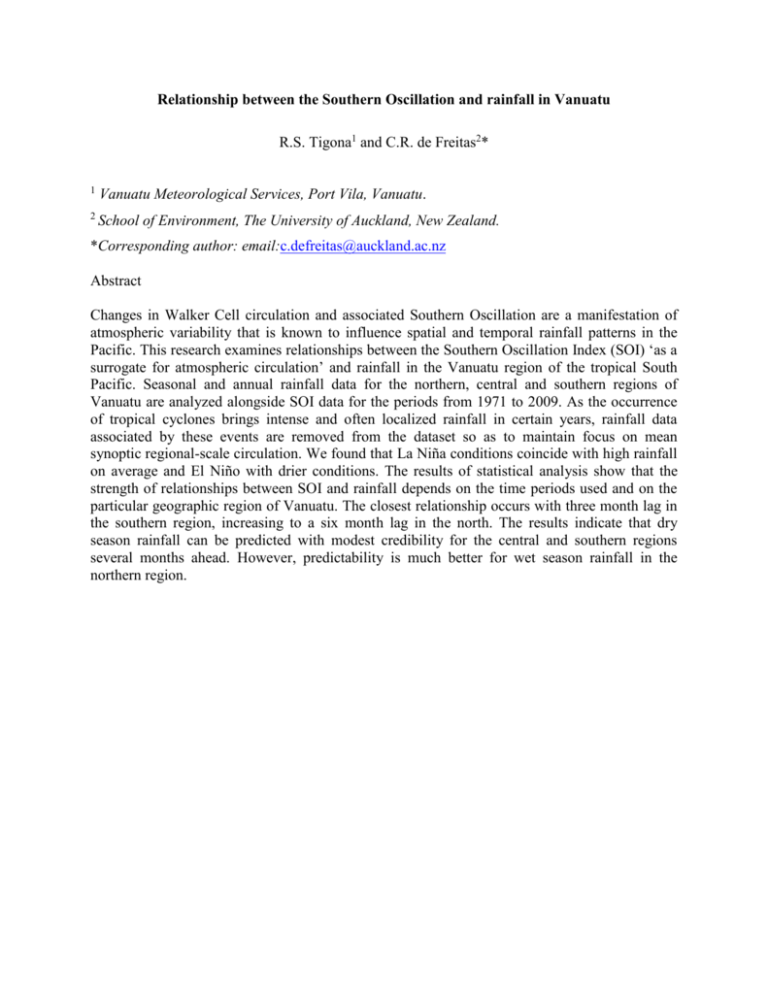
Relationship between the Southern Oscillation and rainfall in Vanuatu R.S. Tigona1 and C.R. de Freitas2* 1 Vanuatu Meteorological Services, Port Vila, Vanuatu. 2 School of Environment, The University of Auckland, New Zealand. *Corresponding author: email:c.defreitas@auckland.ac.nz Abstract Changes in Walker Cell circulation and associated Southern Oscillation are a manifestation of atmospheric variability that is known to influence spatial and temporal rainfall patterns in the Pacific. This research examines relationships between the Southern Oscillation Index (SOI) ‘as a surrogate for atmospheric circulation’ and rainfall in the Vanuatu region of the tropical South Pacific. Seasonal and annual rainfall data for the northern, central and southern regions of Vanuatu are analyzed alongside SOI data for the periods from 1971 to 2009. As the occurrence of tropical cyclones brings intense and often localized rainfall in certain years, rainfall data associated by these events are removed from the dataset so as to maintain focus on mean synoptic regional-scale circulation. We found that La Niña conditions coincide with high rainfall on average and El Niño with drier conditions. The results of statistical analysis show that the strength of relationships between SOI and rainfall depends on the time periods used and on the particular geographic region of Vanuatu. The closest relationship occurs with three month lag in the southern region, increasing to a six month lag in the north. The results indicate that dry season rainfall can be predicted with modest credibility for the central and southern regions several months ahead. However, predictability is much better for wet season rainfall in the northern region.





